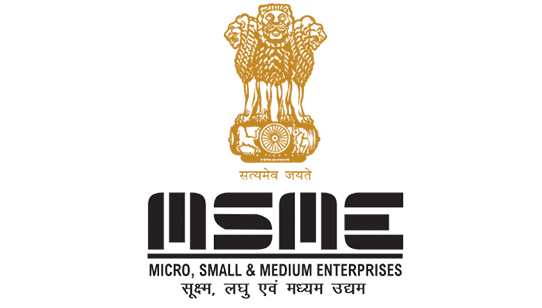The Evolving Landscape of Security in 2025

Highlights :
2025 marks a
transformative year for the security industry, with advancements in AI, IoT,
and sustainability. This blog explores trends like integrated security systems,
evolving cyber threats, smart cities, and the rise of predictive analytics.
Learn how technology, collaboration, and innovation are shaping a safer, more
adaptive world for individuals and organizations alike.
Introduction
The security landscape has always been a reflection of societal evolution, responding to challenges posed by technological advancements and global threats. As we step into 2025, the industry faces unprecedented opportunities and challenges shaped by innovations in artificial intelligence (AI), Internet of Things (IoT), and sustainable practices. This blog dives into the key trends transforming security today and provides actionable insights for professionals looking to stay ahead in this dynamic field.
1. AI and Predictive Analytics: The Future of Security
Artificial intelligence continues to revolutionize the security domain, shifting from reactive to predictive approaches. With machine learning models analyzing vast datasets, security systems can now identify potential threats before they materialize. Predictive analytics helps organizations:
• Detect anomalies in surveillance feeds.
• Preempt cyberattacks by identifying patterns in network behavior.
• Optimize resource allocation during emergencies.
For instance, AI-powered surveillance cameras can distinguish between harmless activity and genuine threats, reducing false alarms while improving response accuracy. In 2025, integrating AI into physical and digital security systems will be a top priority for many organizations.
2. The Rise of Smart Cities
Smart cities are no longer futuristic concepts—they are rapidly becoming a reality. With interconnected devices and systems managing everything from traffic to utilities, these urban environments demand robust security solutions. Key considerations include:
• Securing IoT devices against hacking.
• Developing integrated command centers for real-time monitoring.
• Creating resilient infrastructure to withstand both physical and cyber threats.
Governments and private enterprises are collaborating to establish standards for data security and operational continuity in smart cities. In this context, security professionals must adopt a holistic approach, blending physical and cybersecurity to safeguard critical systems.
3. Cybersecurity: Combating Evolving Threats
As organizations embrace digital transformation, the scope for cyberattacks continues to expand. From ransomware to phishing, attackers are using increasingly sophisticated techniques to target businesses, governments, and individuals.
Trends shaping cybersecurity in 2025 include:
• Zero Trust Architecture: A "never trust, always verify" approach ensures secure access to systems and data.
• Quantum Encryption: Leveraging quantum computing to create virtually unbreakable security protocols.
• Employee Training: Strengthening human defenses against social engineering attacks.
The convergence of physical and cyber threats underscores the importance of integrating security strategies to ensure seamless protection across all domains.
4. Sustainable Security Solutions
Sustainability is becoming a cornerstone of modern security practices. In 2025, organizations are focusing on eco-friendly solutions such as:
• Solar-powered surveillance systems that reduce energy consumption.
• Biodegradable materials in safety equipment.
• Energy-efficient data centers for managing security operations.
Adopting sustainable practices not only aligns with global environmental goals but also enhances organizational reputation and compliance with regulatory frameworks.
5. The Importance of Training and Collaboration
Technology alone cannot guarantee security—people remain at the heart of effective strategies. In 2025, there is a renewed emphasis on:
• Training frontline responders in using advanced tools.
• Fostering cross-industry collaboration to address complex threats.
• Building public-private partnerships to enhance community safety.
Programs like cybersecurity boot camps and fire safety drills are equipping professionals and citizens alike with the skills needed to respond to emergencies swiftly and effectively.
6. Challenges on the Horizon
While technological advancements offer immense potential, they also present unique challenges:
• Privacy Concerns: Striking a balance between surveillance and individual privacy rights remains a pressing issue.
• Interoperability: Ensuring compatibility between legacy systems and modern solutions can hinder adoption.
• Evolving Threats: Adapting to new forms of cyber and physical attacks requires constant vigilance and innovation.
Addressing these challenges demands a proactive, collaborative approach across the security ecosystem.
7. Looking Ahead: The Role of Innovation
The security industry in 2025 is defined by its adaptability and commitment to innovation. Key areas of focus for the future include:
• AI Ethics: Establishing guidelines for the ethical use of AI in surveillance and decision-making.
• Resilience Planning: Building systems capable of withstanding natural disasters, cyberattacks, and other disruptions.
• Personalized Security: Using data analytics to create tailored solutions for individuals and organizations.
Conclusion
As we navigate the complexities of 2025, the security industry stands at the forefront of protecting lives, assets, and information in an ever-changing world. By embracing innovation, fostering collaboration, and addressing emerging challenges, we can create a safer, more resilient future.
(This "Security Blogs" Published in January 2025 Edition)




.png)







